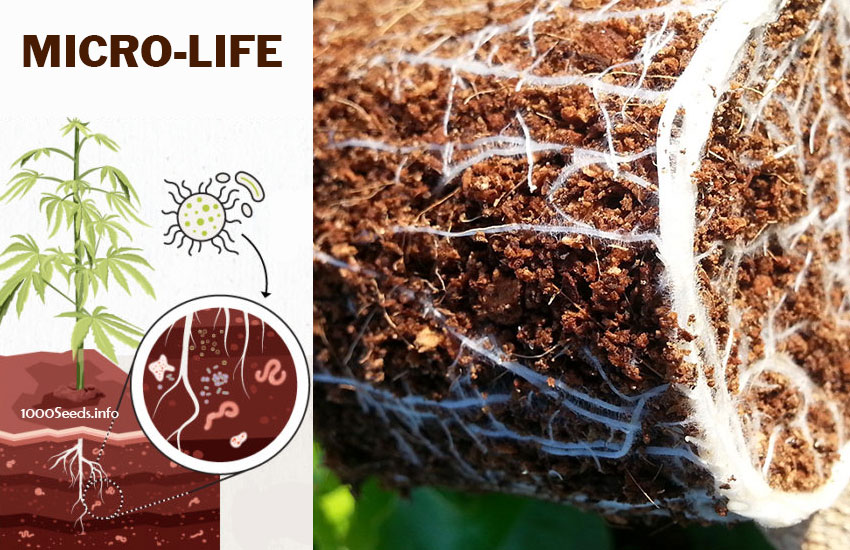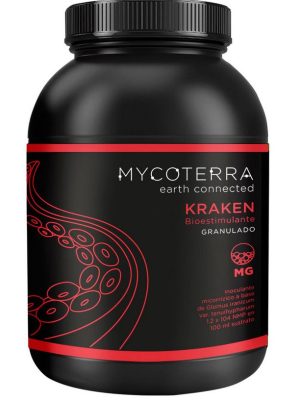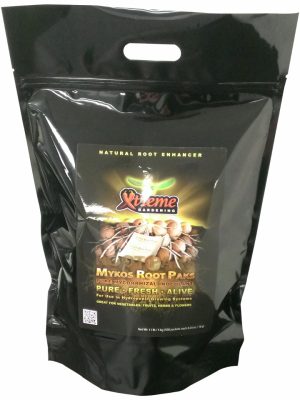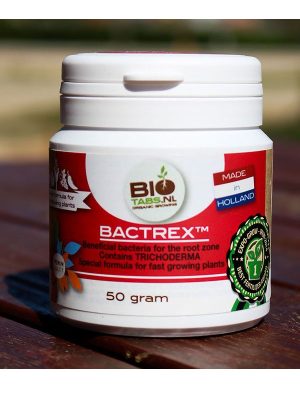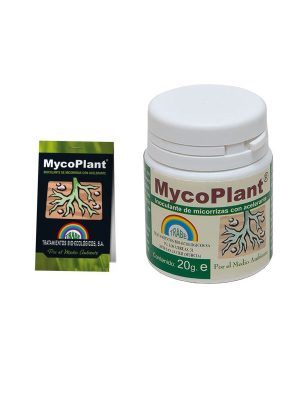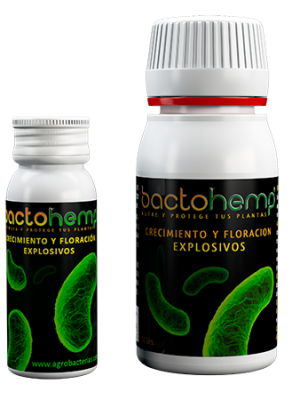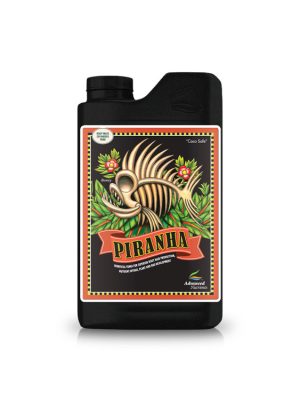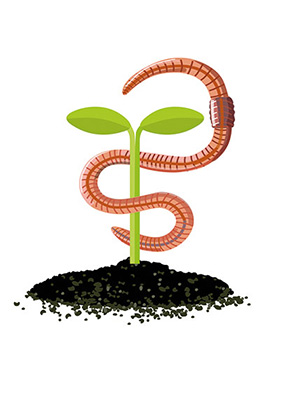A healthy soil functions on the basis of microorganisms, beneficial fungi and bacteria and makes organic cultivation possible. The microorganisms in the soil break down organic matter and turn it into nutrients that plants need.
Organic material can come either from plant remains or from animal legacies: e.g. leaves or manure. The microbiological life in the soil ensures that plants are sufficiently supplied with the necessary nutrients. In organic and organic farming, organic fertilizers are used on the one hand, and chemical pesticides and fungicides are avoided on the other. A healthy soil is alive and contains endless beneficial fungi and bacteria that decompose the organic matter in the soil and make it available in the form of nutrients for the cannabis plants. Healthy soil produces healthy plants and is ultimately the key to all life on our planet.
The earth, the soil consists of organic matter, minerals, stone/sand, nutrients and much more. In nature there is no waste. The tiny microorganisms can only be seen with a microscope. Even a small amount of soil contains millions of bacteria and nematodes together with other beneficial microorganisms they form the microbiological life in the soil, which creates optimal conditions for plants.
But just as these microorganisms provide important nutrients for the cannabis plants, the plants in turn feed beneficial bacteria, fungi and other microorganisms with their residues and the sugar that the roots excrete. All microbiological life takes place in the root zone between the fine roots. The soil, the plants and the living beings in the soil are part of this complex system.
It makes sense to grow organically. Cannabis plants form a rich terpene profile and develop a very high resistance. High quality yields are achieved without harming nature.
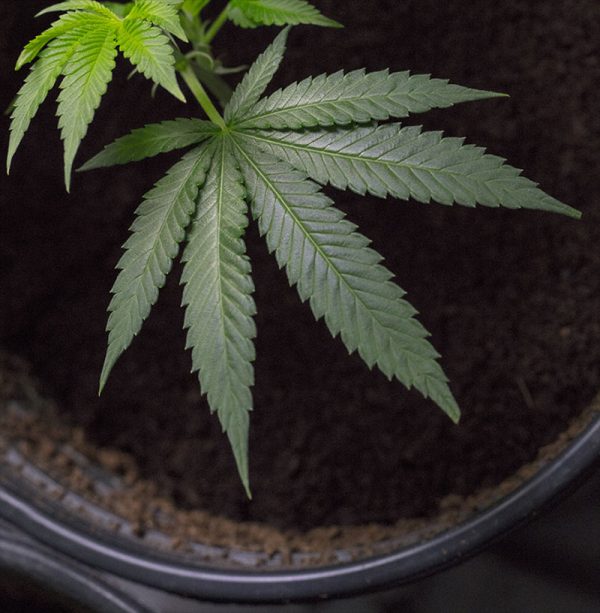
Nitrogen is one of the most important nutrients for cannabis plants. When the soil is healthy, it provides the plants with a sufficient amount of nitrogen. It is as if the soil contains natural antibiotics and previously unrecognized nutrients. Chemical and mineral fertilizers are artificially produced and immediately release nutrients to the plants through the roots. They can be absorbed directly. However, the cannabis plants also become somewhat lazy over time as a result. With organic cultivation, the plants have to work harder to get the nutrients they need. The result is a resistant and strong root system. So in organic growing, the soil is nourished and the soil nourishes the plants.
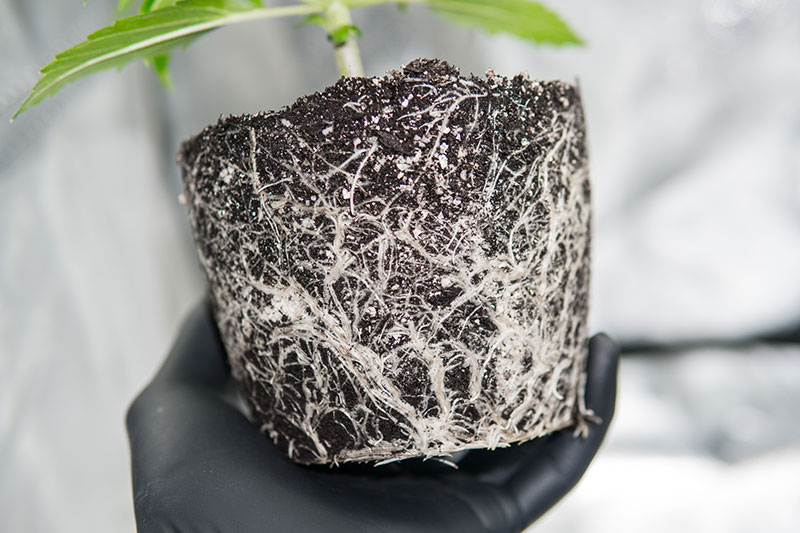
Microorganisms in the soil provide a strong and large root system
The roots
Roots ensure three basic things:
- They anchor cannabis plants in the ground
- They provide cannabis plants with nutrients
- and they provide nutrients.
Cannabis plants have a very fast growing root system that digs deep into the soil. Through the roots, plants are in contact with the soil in which they grow. The tiny hairs on the roots are so fine that they can hardly be seen with the human eye. During the growth of the roots, their cells die again and again. Bacteria and fungi feed on these dead plant cells. Cannabis roots produce organic acid, sugar and enzymes. All these substances in turn affect the environment and the soil.
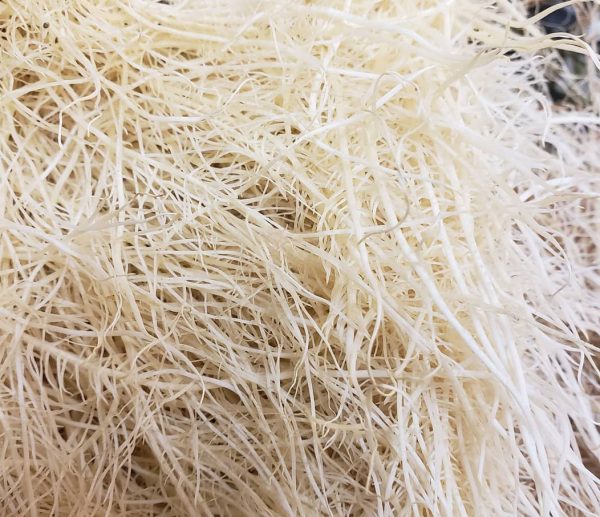
Mycorrhiza
Mycorrhiza is a useful fungus that occurs naturally in the soil. Almost all plants in nature are in contact with him. Symbiosis with this fungus, which colonizes the root system of plants, has a positive effect and leads to higher yields in very simple terms. Mycorrhiza ensures an excessively large and healthy root zone and there are thousands of different groups and subgroups, each with different characteristics. This living fungus is a kind of extension of the plant's own root system. Without mycorrhiza, plants have difficulty surviving unless they are supplied with all the nutrients in soluble form as in hydroponics. Plants grown in soils with mycorrhizae are far more tolerant of extreme temperatures, drought and plant diseases.
Roots can be infected with mycorrhizae by mixing appropriate additives into the planting substrate.
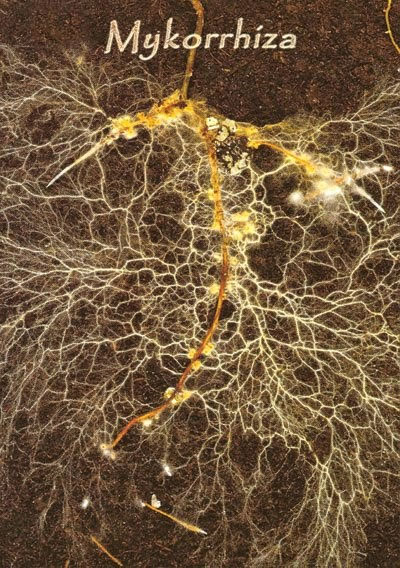 Endomycorrhiza plays a crucial role in the uptake of phosphorus. Phosphorus is difficult for plants to absorb from the soil. Endomycorrhiza takes it out of the soil for cannabis plants and brings it to the roots. Some endomycorrhizae can provide up to 80% of the plant's phosphorus needs. They also provide nitrogen, magnesium, potassium, zinc, copper, iron and calcium. At the same time, the super "earth fungus" makes cannabis plants resistant to various pathogenic organisms. It spreads so much that harmful fungi have a hard time near it, because they simply can't find a place. Various Mycorrhizae spores are available in powder form and can be mixed into the soil. Too much digging and shoveling can disturb this beneficial fungus. Mycorrhizae does not like chemical fertilizers and pesticides. Too much digging can destroy the fine network of the fungus.
Endomycorrhiza plays a crucial role in the uptake of phosphorus. Phosphorus is difficult for plants to absorb from the soil. Endomycorrhiza takes it out of the soil for cannabis plants and brings it to the roots. Some endomycorrhizae can provide up to 80% of the plant's phosphorus needs. They also provide nitrogen, magnesium, potassium, zinc, copper, iron and calcium. At the same time, the super "earth fungus" makes cannabis plants resistant to various pathogenic organisms. It spreads so much that harmful fungi have a hard time near it, because they simply can't find a place. Various Mycorrhizae spores are available in powder form and can be mixed into the soil. Too much digging and shoveling can disturb this beneficial fungus. Mycorrhizae does not like chemical fertilizers and pesticides. Too much digging can destroy the fine network of the fungus.
Certain bacteria in the soil are very important for microbiological life. With the use of chemical fertilizers and pesticides, the nutrients naturally produced by the plant are reduced. Cannabis plants become more susceptible to harmful outside influences. Whether beneficial fungi, bacteria or other microorganisms, they all perform their very specific and important function in the complex system.
Trichoderma harzianum
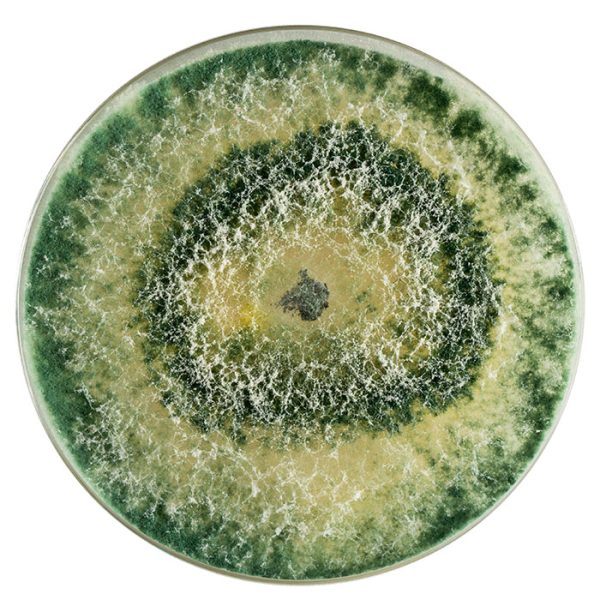
Trichoderma harzianum is a microscopic fungus that possesses some useful metabolites suitable for controlling fungal diseases in plants without harming them, without polluting the environment, and increasing production by up to 13 percent. When Trichoderma is present, harmful fungi such as Fusarium and Phytium no longer have a chance.
This useful fungus adapts to any environment, soil and culture and can destroy all pathogenic fungi that affect the plant. Trichoderma occurs naturally in many soils of our planet.
Fertilize the soil
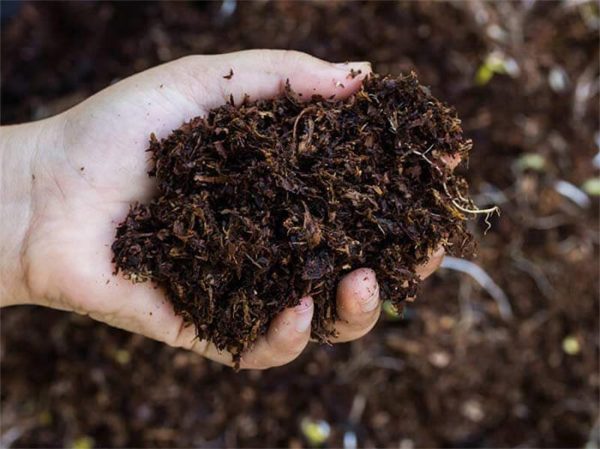
The soil can best be enriched by adding compost and various organic additives.
Important organic fertilizers:
Alfalfa flour (2-1-3)
Alfalfa meal contains nitrogen and trace elements. The plant is dried, ground and then mixed into the soil. It takes about 1-4 months for the nutrients to be broken down by the microorganisms.
Bat Guano (NPK 3-10-1)
Bat droppings are a popular organic fertilizer that provides abundant phosphorus. It is also a good choice when there is no time left to make compost and let it rest. It remains active in the soil for 4-6 months.
Cottonseed meal (NPK 6-4-1)
Cottonseed meal contains a lot of nitrogen and trace elements. The effects last up to 6 months in the soil. Attention should be paid to organically grown cottonseed meal.
Corn gluten meal (NPK 0-0-0)
Corn gluten meal contains a lot of nitrogen, which is released over a period of up to 6 months.
Human and animal hair (NPK 15-0-0)
If you have been to the hairdresser again or your dogs. Human and animal hair contains an enormous amount of nitrogen. However, it can take up to 2 years until it is composted. So something for people with a lot of patience.
Soybean meal (7-3-3)
Make sure it is not made from genetically modified soy if possible.
Stone powder
Is often made from volcanic rock and contains large amounts of trace elements and minerals. It stimulates life in the soil for many years, strengthens the natural defenses of plants and improves soil structure.
Vinasse and molasses
Vinasse and molasses are by-products obtained during the production of sugar. Molasses refers to a sugary syrup produced during the manufacture of granulated sugar. Molasses, has a higher sugar content and is processed and used in industry for many other applications. During the processing of molasses, another by-product is produced by fermentation, which is called vinasse and contains hardly any sugar.
Field trials have shown that vinasse has a very surprising fertilizing effect. The reason for this is, on the one hand, that the residual sugar it contains increases the activity of soil organisms, which in turn break down the nutrients contained in the soil more effectively and make them available to plants. On the other hand, this allows the nutrients nitrogen and potassium to enter the soil directly. Phosphorus and magnesium are only present in traces.
Herbal decoctions
Herbal liquid manure is considered to be a particularly sustainable and effective organic fertilizer. The stinging nettle liquid manure is the best known. It is a nitrogen supplier for high-yielding cannabis plants and can be used both outdoors and indoors. Herbal dips can be made yourself or are readily available.
One of the best known is stinging nettle liquid manure, which is mainly used as a nitrogen supplier for high and medium yielding plants (cabbage, cucumbers, pumpkin, tomatoes). It is also rich in calcium and silicon.
Compost
A high quality compost is considered one of the best fertilizers in organic farming. It contains a large amount of different nutrients, but they can vary greatly depending on the plant residues used. Compost can be easily made by any grower with a garden or bought ready-made. Humus-rich compost consists of rotted kitchen and garden waste as well as tree and shrub trimmings, grass and leaves. Compost contains a large number of microorganisms.
Organic Cultivation Indoor
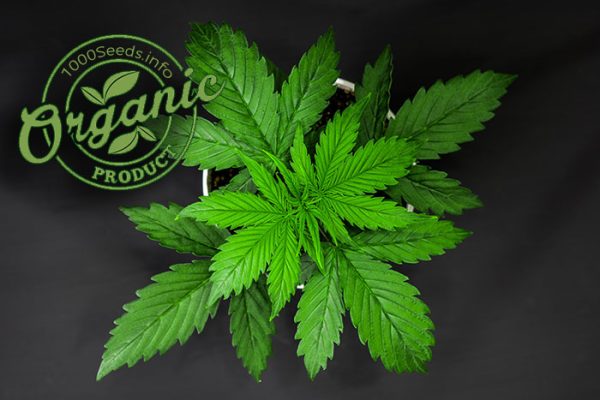
In organic indoor cultivation, compost alone is not enough to achieve the desired yields. The organic soil is previously mixed with various natural fertilizers to meet the needs of cannabis plants and then must rest for some time to develop and mature. In pots and when growing indoors, organic cultivation is undoubtedly more difficult and requires a little more attention than outdoor. Microbiological life can only take place to a limited extent in plant pots and is further disturbed by influences such as artificial light.
Therefore, it is advisable to consider a few things when growing organically indoors:
- regularly add microorganisms via the irrigation water or by mixing them into the planting soil.
- use regularly and additionally a purely organic liquid fertilizer such as herbal liquid manure, liquid compost/compost tea or seaweed fertilizer to provide sufficient nutrients and nitrogen to the plants.
- Always allow your organic soil mixture to stand and mature long enough for microbiological life to develop
- use a high quality, organic soil as a starting substrate
Here is a recipe for an organic soil base mix:
- 10L organic soil mix
- 10L Coco fiber substrate
- 10L perlite
- 10L worm manure or fresh compost
Other ingredients:
- Dolomite lime (130ml)
- Bat fertilizer (60ml)
- Seaweed flour (130ml)
- Rock flour (60ml)
- Humic acid (250ml)
- Alfalfa flour (250ml)
- Organic rice (200ml)
- Mycorrhiza and microorganisms in powder form approx. 1g
Mix all the ingredients and let the organic soil mix rest for 2-4 weeks at a temperature of at least 16° C or higher. Mix the soil mix every few days.
Microorganisms for organic cultivation
In organic growing, microorganisms are regularly added to the planting substrate. The following products help the organic grower to initiate the microbiological life in the soil, thus increasing yields and ensuring healthy plants:






